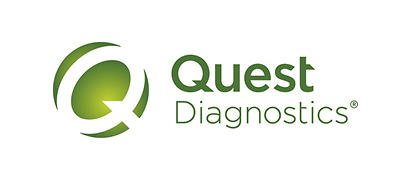Multiple approaches have been developed, often relying on data from large patient groups with shared characteristics to match individuals to the most appropriate treatment or monitoring strategy.
MRD testing takes a personalized approach
In contrast, the Haystack MRDTM?test from Quest Diagnostics is personalized for each patient. Tumor tissue collected at surgery is sent for sequencing to identify patient-specific somatic mutations. A personalized MRD test is then developed to detect circulating tumor DNA (ctDNA) in a blood sample.
¡°The technology has evolved over time,¡± Dr Patt says, with increasingly sensitive assays. In breast cancer, for instance, the Haystack MRD assay is ¡°2 orders of magnitude more sensitive¡± than earlier MRD technology, she says.1?This translates to an ability to potentially detect and treat recurrence at the earliest possible stage, before it becomes apparent clinically. Or, just as important, when the patient has no detectable disease, additional treatment might be avoided, along with all its side effects.
The personalized MRD test can be performed whenever needed to detect residual or recurrent disease throughout the patient¡¯s care journey. It can be used to detect residual disease to guide adjuvant therapy, to monitor treatment response, and for recurrence surveillance.
MRD testing can save healthcare dollars while improving patient outcomes
The utility of MRD testing for avoiding unnecessary treatment was shown in the landmark DYNAMIC study, which examined patients with Stage II colon cancer who were randomized to have their adjuvant treatment decisions guided by ctDNA analysis or standard clinicopathological features. Haystack MRD? uses an optimized version of the ctDNA detection technology used in the DYNAMIC study, which was the first study of its kind to assess the clinical benefit of MRD testing to guide adjuvant therapy. DYNAMIC was not a Haystack MRD-sponsored study. Among the ctDNA group, those whose results were negative did not receive adjuvant therapy. Patients in the ctDNA-guided group had equivalent outcomes at the 2-year and 5-year follow-ups to those in the standard-of care group.
¡°Using MRD testing to inform those subsequent treatment choices was actually a cost savings strategy,¡± Dr Flora points out. ¡°Sometimes people are concerned about the cost of this testing, and that is a real concern, because we need to be responsible stewards of the healthcare dollar, but in the event that you can spare a patient chemotherapy, it also has an opportunity for cost savings.¡±
A negative result is clearly the best possible outcome for the patient, but a positive result not only guides treatment choice, but can be an important way to keep the patient focused on continuing treatment. ¡°Treatment enthusiasm wanes for patients, and discussions?wane for doctors, and that's a threat,¡± Dr Patt says. ¡°And so, if we had information to inform that threat, I think it would help patients be more compliant with any strategy that you've implemented.¡±
Dr Flora compares the battle against cancer to fighting a fire¡ªMRD testing can detect a tiny ember that can restart at any time. ¡°The key is, MRD is actually telling us that there is circulating evidence of a residual ember, right there in this patient.¡± And when there is residual disease detected, the doctor and patient can work together to choose the best way to extinguish that ember before the fire starts again.






